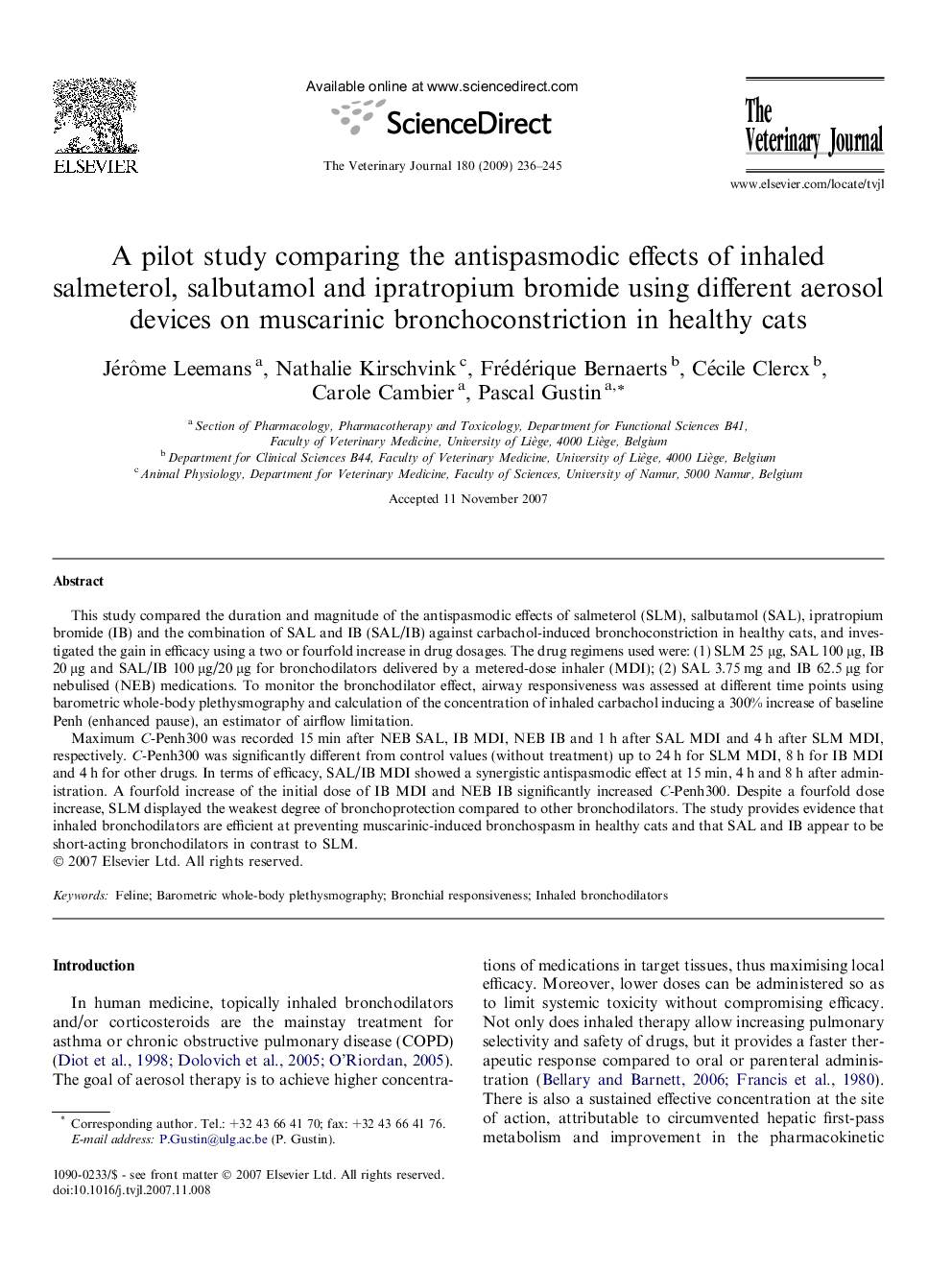| Article ID | Journal | Published Year | Pages | File Type |
|---|---|---|---|---|
| 2465548 | The Veterinary Journal | 2009 | 10 Pages |
This study compared the duration and magnitude of the antispasmodic effects of salmeterol (SLM), salbutamol (SAL), ipratropium bromide (IB) and the combination of SAL and IB (SAL/IB) against carbachol-induced bronchoconstriction in healthy cats, and investigated the gain in efficacy using a two or fourfold increase in drug dosages. The drug regimens used were: (1) SLM 25 μg, SAL 100 μg, IB 20 μg and SAL/IB 100 μg/20 μg for bronchodilators delivered by a metered-dose inhaler (MDI); (2) SAL 3.75 mg and IB 62.5 μg for nebulised (NEB) medications. To monitor the bronchodilator effect, airway responsiveness was assessed at different time points using barometric whole-body plethysmography and calculation of the concentration of inhaled carbachol inducing a 300% increase of baseline Penh (enhanced pause), an estimator of airflow limitation.Maximum C-Penh300 was recorded 15 min after NEB SAL, IB MDI, NEB IB and 1 h after SAL MDI and 4 h after SLM MDI, respectively. C-Penh300 was significantly different from control values (without treatment) up to 24 h for SLM MDI, 8 h for IB MDI and 4 h for other drugs. In terms of efficacy, SAL/IB MDI showed a synergistic antispasmodic effect at 15 min, 4 h and 8 h after administration. A fourfold increase of the initial dose of IB MDI and NEB IB significantly increased C-Penh300. Despite a fourfold dose increase, SLM displayed the weakest degree of bronchoprotection compared to other bronchodilators. The study provides evidence that inhaled bronchodilators are efficient at preventing muscarinic-induced bronchospasm in healthy cats and that SAL and IB appear to be short-acting bronchodilators in contrast to SLM.
